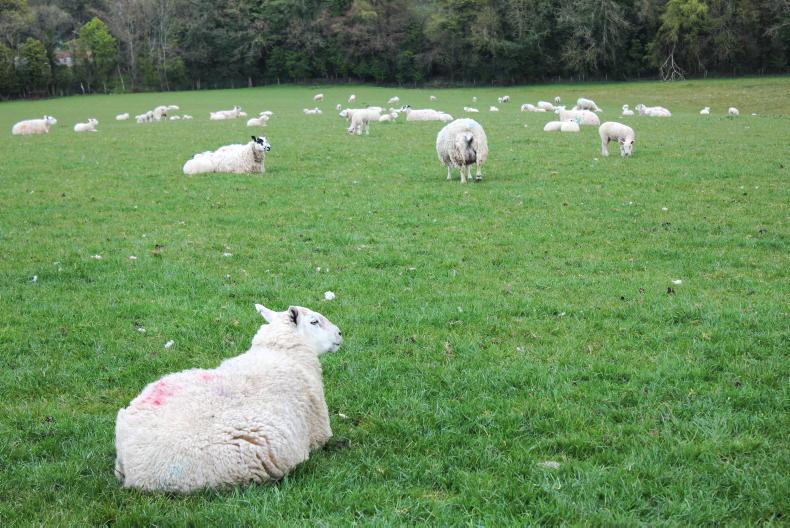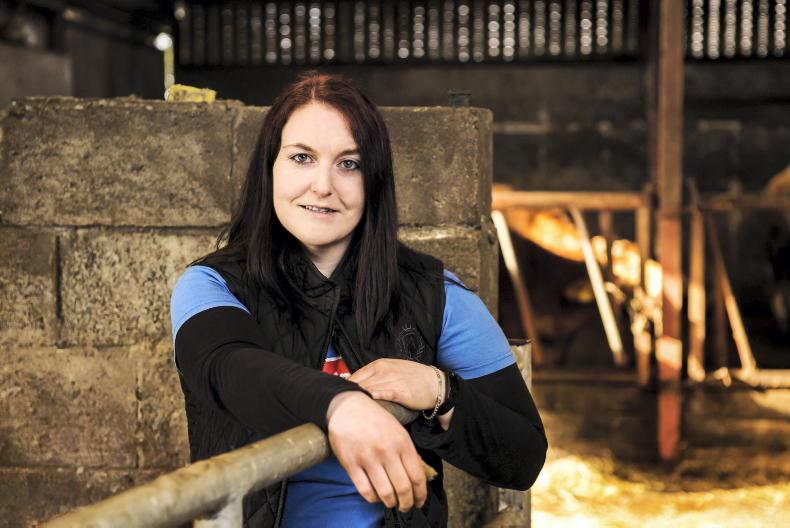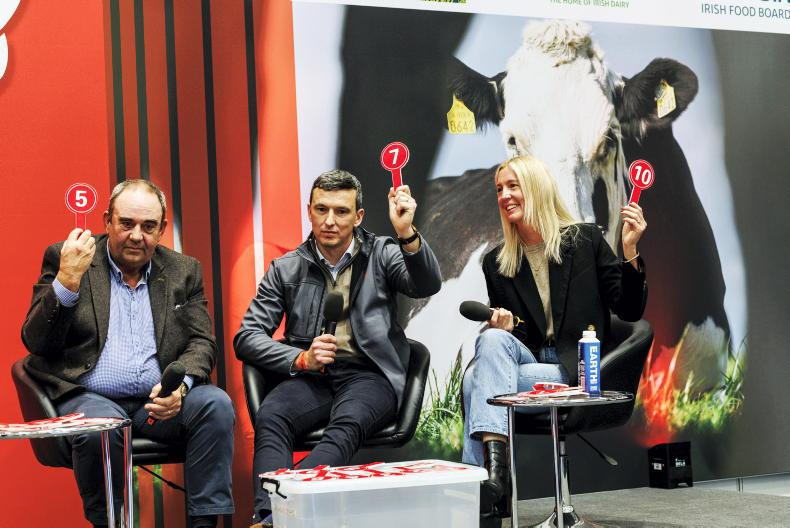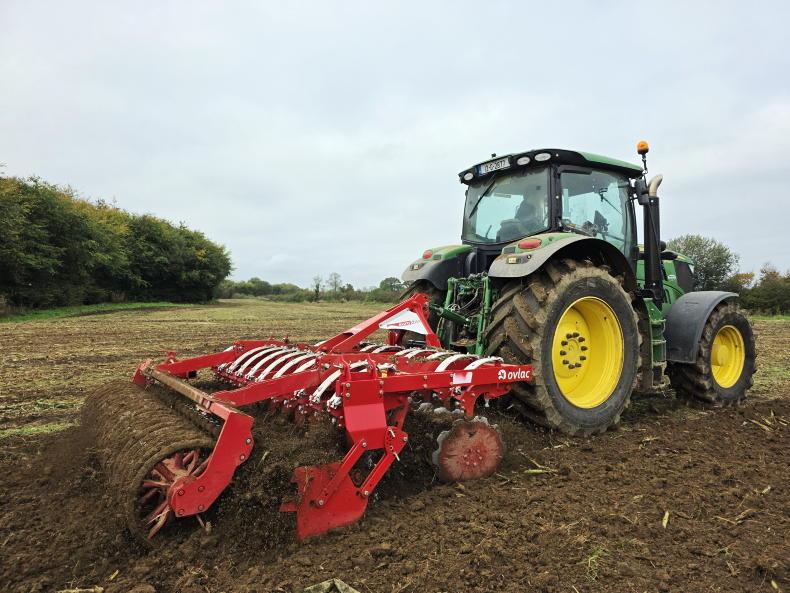I have been meaning to reseed my biggest field (12 acres) for six or seven years now, but never quite managed to bite the bullet and sacrifice this relatively large area for a vital part of the grazing season.
It is used for overwintering a flock of pregnant sheep, before being fertilised and cut for silage, followed by four months of fattening weaned lambs.
In other words, it just seemed like too much hassle to risk hitting a dodgy spell of weather (and therefore a prolonged period out of production) with the knock-on effect on the rest of my grazing platform.
However, this spring provided me with some sort of opening, so I grabbed the opportunity; I reseeded it, and am now anxiously driving past every day, waiting for the expected green sheen to appear.
Mixtures
Over the past few years, I have experimented with various mixtures and blends, but the riskier the choice, the smaller an area was chosen. For instance, when I tried the hybrid ryegrass/red clover mix, it was only four acres. So, if it all went pear-shaped, it wasn’t the end of the world.
However, I wanted this field sown out with a mixture that would provide a palatable sward for lambs, could easily produce a suitable crop for silage, and yet would withstand a bit of abuse during the winter.
Most importantly, I’d like it to last for 20 years. I suppose you could say I wanted to have my cake and eat it.
I decided to make a few phone calls in the hope that someone could provide some answers
This “long-term” definition was my first problem area. Long-term nowadays seems to be defined as anything that lasts for five years.
In contrast, I consider that to be short term in the extreme and researching all those lists of latest available grasses will not help in any way.
Since the recommended lists gave no indication or help in my quest for a suitable mixture for this farm, I decided to make a few phone calls in the hope that someone could provide some answers.
However, when you start asking questions that deviate away from the latest high-yielding, intensively geared varieties, you will draw a pile of blank stares and long silences.
Nor is it easy to unearth useful information regarding hardiness and long-term response to a good tramping from a flock of ewes during wet winters
The most you can hope for are words of encouragement that perhaps most of our modern mixtures are not particularly suited to extensively farmed beef and sheep situations.
Nor is it easy to unearth useful information regarding hardiness and long-term response to a good tramping from a flock of ewes during wet winters.
For instance, what I was looking for was an indication that perhaps a certain variety would yield 15% below the newest ones, but was as tough as old boots, and would persist for decades.
Maybe there is no such thing? But how do you find out? Because there are hundreds or even thousands of lower-stocked beef and sheep farms that would surely benefit from such a mixture.
Muti-species
Some people asked if I would consider one of the new multi-species mixes, but they weren’t even on my radar. Undoubtedly they are currently fashionable, but are still years away from being used on this farm.
I have seen great results with these swards, but all my praise is reserved for the farmer who grew them
At this stage, there are far too many questions remaining around ease of management, hardiness, palatability when undergrazed, and how you cope with Derek’s magnificent displays of creeping thistle and nettles when no herbicides can be used?
I have seen great results with these swards, but all my praise is reserved for the farmer who grew them – he is a top-class operator.
Decision
In the end, I opted for a similar mixture to the one used six years ago in a seven-acre field, which still appears to be lasting well, with a good percentage of retained clover.
It is advertised as being suitable for marginal land or-lower stocked beef and sheep farms. In truth, it was the only over-the-counter blend I could find which came close to ticking the required boxes.
Equal quantities (5.5kg) of late-heading ryegrasses and tall fescues comprise the bulk of the mix, topped up with 1kg each of cocksfoot, timothy, and a clover blend.
If it lasts as long as the last mixture in this field (which was well past its sell-by date) then I will be 84 years of age by the time its next reseeding choice is needed. I’ve a feeling that decision won’t be made by me.
Read more
Lambing ewes that you don’t see on TV
Farmer Writes: decision made on roadmap for the farm
I have been meaning to reseed my biggest field (12 acres) for six or seven years now, but never quite managed to bite the bullet and sacrifice this relatively large area for a vital part of the grazing season.
It is used for overwintering a flock of pregnant sheep, before being fertilised and cut for silage, followed by four months of fattening weaned lambs.
In other words, it just seemed like too much hassle to risk hitting a dodgy spell of weather (and therefore a prolonged period out of production) with the knock-on effect on the rest of my grazing platform.
However, this spring provided me with some sort of opening, so I grabbed the opportunity; I reseeded it, and am now anxiously driving past every day, waiting for the expected green sheen to appear.
Mixtures
Over the past few years, I have experimented with various mixtures and blends, but the riskier the choice, the smaller an area was chosen. For instance, when I tried the hybrid ryegrass/red clover mix, it was only four acres. So, if it all went pear-shaped, it wasn’t the end of the world.
However, I wanted this field sown out with a mixture that would provide a palatable sward for lambs, could easily produce a suitable crop for silage, and yet would withstand a bit of abuse during the winter.
Most importantly, I’d like it to last for 20 years. I suppose you could say I wanted to have my cake and eat it.
I decided to make a few phone calls in the hope that someone could provide some answers
This “long-term” definition was my first problem area. Long-term nowadays seems to be defined as anything that lasts for five years.
In contrast, I consider that to be short term in the extreme and researching all those lists of latest available grasses will not help in any way.
Since the recommended lists gave no indication or help in my quest for a suitable mixture for this farm, I decided to make a few phone calls in the hope that someone could provide some answers.
However, when you start asking questions that deviate away from the latest high-yielding, intensively geared varieties, you will draw a pile of blank stares and long silences.
Nor is it easy to unearth useful information regarding hardiness and long-term response to a good tramping from a flock of ewes during wet winters
The most you can hope for are words of encouragement that perhaps most of our modern mixtures are not particularly suited to extensively farmed beef and sheep situations.
Nor is it easy to unearth useful information regarding hardiness and long-term response to a good tramping from a flock of ewes during wet winters.
For instance, what I was looking for was an indication that perhaps a certain variety would yield 15% below the newest ones, but was as tough as old boots, and would persist for decades.
Maybe there is no such thing? But how do you find out? Because there are hundreds or even thousands of lower-stocked beef and sheep farms that would surely benefit from such a mixture.
Muti-species
Some people asked if I would consider one of the new multi-species mixes, but they weren’t even on my radar. Undoubtedly they are currently fashionable, but are still years away from being used on this farm.
I have seen great results with these swards, but all my praise is reserved for the farmer who grew them
At this stage, there are far too many questions remaining around ease of management, hardiness, palatability when undergrazed, and how you cope with Derek’s magnificent displays of creeping thistle and nettles when no herbicides can be used?
I have seen great results with these swards, but all my praise is reserved for the farmer who grew them – he is a top-class operator.
Decision
In the end, I opted for a similar mixture to the one used six years ago in a seven-acre field, which still appears to be lasting well, with a good percentage of retained clover.
It is advertised as being suitable for marginal land or-lower stocked beef and sheep farms. In truth, it was the only over-the-counter blend I could find which came close to ticking the required boxes.
Equal quantities (5.5kg) of late-heading ryegrasses and tall fescues comprise the bulk of the mix, topped up with 1kg each of cocksfoot, timothy, and a clover blend.
If it lasts as long as the last mixture in this field (which was well past its sell-by date) then I will be 84 years of age by the time its next reseeding choice is needed. I’ve a feeling that decision won’t be made by me.
Read more
Lambing ewes that you don’t see on TV
Farmer Writes: decision made on roadmap for the farm










SHARING OPTIONS